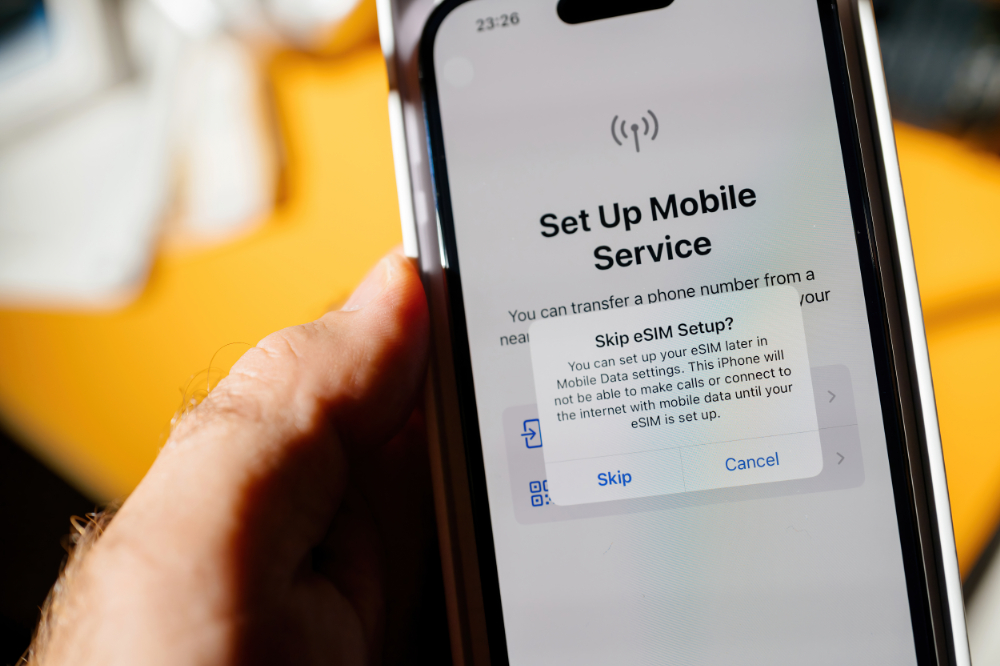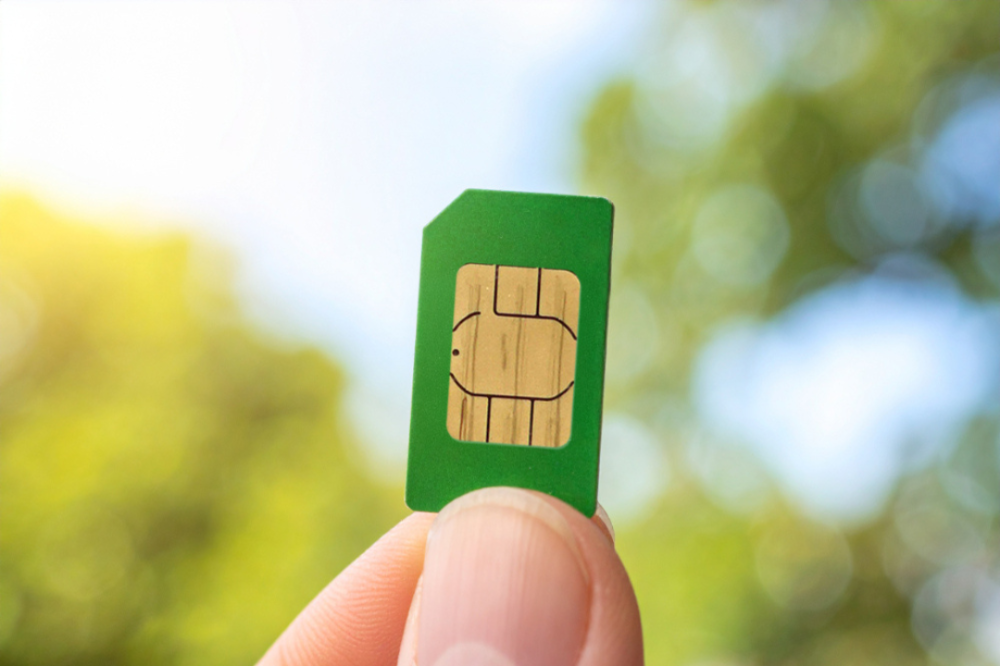
Japan WiFi Device Guide: Everything You Need to Know Before Traveling
Staying online in Japan can make all the difference, whether navigating a maze-like train station, translating a menu, or sharing your adventures in real time.
However, relying on free WiFi can be frustrating, and roaming fees quickly increase. This guide dives into Japan’s WiFi solutions—from pocket WiFi rentals to other mobile internet options—helping you find the best fit for your travels.
Whether weaving through Tokyo’s neon-lit alleys or exploring remote mountain villages, discover the most innovative way to stay connected without interruptions.
What Is a Pocket WiFi Device for Japan?
A pocket WiFi device is a compact, portable router that keeps you connected no matter where your travels take you.
Whether you're scanning a digital menu at a tiny ramen shop in Osaka, live-streaming a sumo match in Fukuoka, or hunting down a hidden onsen in the mountains of Hokkaido, A pocket WiFi device ensures a fast, private, and stable internet connection at all times.
Understanding Pocket WiFi and How It Works
A pocket WiFi device is a portable hotspot that allows multiple devices—such as smartphones, tablets, and laptops—to connect to the internet simultaneously.
Unlike a SIM card, which provides mobile data to a single device, a pocket WiFi lets you and your travel companions share one internet connection without swapping SIM cards or worrying about compatibility issues.
If you're traveling with others, a pocket WiFi device keeps everyone connected without needing separate data plans.
Pocket WiFi connects to Japan’s mobile networks, just like a smartphone. Depending on the model and provider, you may have access to high-speed 4G or even 5G data.
Some advanced models also feature cloud SIM technology, which automatically connects to the best available network without requiring a physical SIM card.
Why Travelers Need a Pocket WiFi Device in Japan
Limited Free WiFi and Coverage Gaps:
While Japan offers free WiFi in some locations, it’s often unreliable, restricted by time limits, or requires complex logins in Japanese. Even in Tokyo and Osaka, many cafés and attractions require registration, and rural areas like Takayama or Mount Fuji have even fewer options. A pocket WiFi device ensures constant internet access, eliminating the frustration of hunting for a stable connection.
Essential for Navigation and Communication:
Japan’s transportation system, though efficient, can be overwhelming. Apps like Google Maps are crucial for navigating Tokyo’s subway or checking real-time train schedules in Fukuoka. Translation tools like Google Lens help with menus, directions, and signage, making daily interactions easier. Whether ordering at a local izakaya or finding the correct train, pocket WiFi keeps you connected when needed.
Secure, Fast, and Reliable Internet:
Public WiFi networks pose security risks, especially in crowded areas like airports and train stations. A pocket WiFi device provides a private, stable connection, protecting sensitive data like online banking details. Whether you’re sharing travel moments, video-calling family, or handling reservations, pocket WiFi guarantees seamless and secure connectivity throughout your trip.
Types of Pocket WiFi Devices in Japan and How to Choose
 Japan offers several types of pocket WiFi devices, each catering to different travel needs. Some prioritize speed, while others provide broader coverage or flexible data options. Choosing the right device depends on your itinerary, usage habits, and budget.
Japan offers several types of pocket WiFi devices, each catering to different travel needs. Some prioritize speed, while others provide broader coverage or flexible data options. Choosing the right device depends on your itinerary, usage habits, and budget.
Different Pocket WiFi Device Types
Carrier-Based Mobile Routers (SoftBank, au, Docomo):
These devices use Japan’s major telecom networks, providing reliable nationwide coverage. They work well for travelers exploring both cities and rural areas, making them ideal for trips that include destinations like Hokkaido or Okinawa. However, speed may vary depending on network congestion.
WiMAX Routers (Speed-Focused, But Limited Coverage):
WiMAX routers provide high-speed data access, making them ideal for travelers who need fast, stable internet for streaming or work. However, coverage is mainly concentrated in urban areas like Tokyo and Osaka. Signal strength may be weak if you're traveling to rural regions or underground locations, such as subways.
Cloud SIM Routers (Global Connectivity, Flexibility):
Cloud SIM routers automatically connect to the most potent available carrier, offering more flexible coverage without relying on a single network. They are ideal for travelers who move between urban and rural areas or visit Japan frequently. Some models also support international use. However, they can be pricier than standard pocket WiFi rentals, so travelers should compare plans based on their data needs.
Choosing the Right Pocket WiFi Device for Your Trip
Travel Duration and Data Needs:
Short-term visitors (a week or less) may benefit from flexible daily plans. In contrast, long-term travelers might benefit from considering monthly plans with high data caps. Heavy users—such as those streaming videos, attending remote meetings, or constantly using navigation apps—should opt for unlimited options to avoid data restrictions.
Battery Life and Coverage Area Considerations:
A full day of sightseeing can quickly drain a pocket WiFi’s battery. Look for a device with at least 5–8 hours of battery life, especially if you plan day trips to places like Hakone or Nikko. Travelers heading to rural areas should choose a device with strong network coverage, such as a carrier-based router.
Budget and Rental Plan Options:
Pocket WiFi rental in Japan is flexible and affordable, with plans tailored to different needs. NINJA WiFi’s rentals start at just 440 yen per day for 1GB of high-speed data, an inexpensive option for short-term visitors, while heavy users can opt for unlimited plans at 1,980 yen per day. For budget-conscious travelers, sharing a device can significantly reduce costs.
How and Where to Rent a Japan Pocket WiFi Device

Staying connected in Japan is easier than ever with pocket WiFi rentals, but knowing where and how to rent one ensures a smooth experience. Whether picking up a device at the airport or arranging a delivery, there are multiple ways to secure reliable internet access for your trip.
Pocket WiFi Rental Options in Japan
Renting a pocket WiFi device at major airports like Narita, Haneda, and Kansai International is convenient, but availability can be limited, especially during peak travel seasons. Pre-booking in advance is highly recommended to avoid stock shortages and long wait times.
For added convenience, many providers offer online reservations with delivery to hotels, Airbnb locations, or post offices across Japan. NINJA WiFi allows travelers to pick up their device at 10 different airports across Japan, select locations in Tokyo, or have it delivered directly to their preferred address.
For those already in Japan, in-store pick-up is available in various cities; with NINJA WiFi, for example, you can pick up your WiFi device at the Shinjuku counter the day of your reservation, though only between 10 a.m. and 6 a.m. on weekdays. Since walk-in availability is not always guaranteed, pre-ordering remains the most reliable option for securing a device.
Regarding secondhand devices, proceed with caution: Some travelers buy secondhand pocket WiFi devices, but these may have outdated software, poor battery life, or unreliable connectivity. Renting from a trusted provider ensures a fully functional device with customer support.
Japan-Based vs. Foreign Pocket WiFi Rental Companies
Japan-based providers like NINJA WiFi offer advantages such as a wider selection of pick-up locations, robust local network coverage, and multilingual customer support. They also make the return process more convenient, with options to drop off devices at airports or designated local locations.
Foreign providers may also allow you to reserve a pocket WiFi before arriving in Japan; however, they often have higher rental fees and limited local support, which can impact the quality of your experience should you have any issues.
Pocket WiFi Device Models in Japan and Long-Term Care Tips
 When traveling in Japan, choosing the right pocket WiFi model and maintaining its performance can significantly enhance your experience. With various models available, it’s essential to understand their differences, such as 4G and 5G capabilities, and know how to care for your device to ensure it lasts throughout your journey.
When traveling in Japan, choosing the right pocket WiFi model and maintaining its performance can significantly enhance your experience. With various models available, it’s essential to understand their differences, such as 4G and 5G capabilities, and know how to care for your device to ensure it lasts throughout your journey.
Popular Pocket WiFi Models in Japan (4G vs. 5G)
In Japan, many travelers still opt for 4G pocket WiFi devices, which offer a reliable and cost-effective solution for internet access. Models like the SoftBank 4G and WiMAX 4G routers are standard, providing decent speeds for typical travel needs, including browsing, navigation, and light streaming.
These devices typically support a variety of data plans, including limited and unlimited options: it is the model in use for most of NINJA WiFi’s plans.
While 4G is sufficient for many, those who prioritize speed and the ability to stream high-definition videos or perform bandwidth-heavy tasks, such as video editing or downloading large files, will benefit from newer 5G models.
The latest 5G pocket WiFi devices, such as those provided by SoftBank 5G or Docomo 5G, offer cutting-edge speeds that can handle more demanding tasks like online gaming, live streaming, and high-quality video calls.
This is why NINJA WiFi also offers an Unlimited Plan using a Docomo 5G U50 model for 2,200 yen daily.
While 5G coverage is expanding, it’s important to remember that it’s still more available in urban areas and has slower speeds in rural regions.
If you're traveling across Japan's countryside, a 4G device may be more practical and cost-effective.
Maximizing Your Pocket WiFi Performance
There are several ways to maximize the efficiency and lifespan of your pocket WiFi to ensure that it performs at its best throughout your trip.
Extending Battery Life During Travel:
Pocket WiFi devices typically last for about 6-8 hours on a single charge, but can vary depending on usage and the device model. If you plan to use your device for extended periods, such as on long sightseeing tours or while traveling on trains, consider carrying a portable power bank to ensure your device stays charged.
Additionally, enabling power-saving modes on your WiFi device—like turning off unused features (e.g., Bluetooth or location services)—can further extend battery life, ensuring you’re always connected when needed.
Keeping Software Updated for Security and Performance:
Like any technology, pocket WiFi devices require regular updates to stay secure and efficient. Manufacturers may release firmware updates to improve connectivity, security, and performance.
It is, therefore, recommended that you ensure your device's software is updated before you start your trip. Keeping your device up-to-date will help prevent issues like dropped connections or slower speeds and guard against potential security risks.
Conclusion
A pocket WiFi device offers travelers the most reliable, flexible, and secure solution, ensuring uninterrupted access to high-speed internet wherever your journey takes you.
When choosing a pocket WiFi rental, consider data limits, rental duration, and coverage area. For a stress-free rental process, NINJA WiFi offers flexible data plans, multiple pick-up and return locations, and strong nationwide coverage. Book now and enjoy stress-free connectivity throughout your trip.








